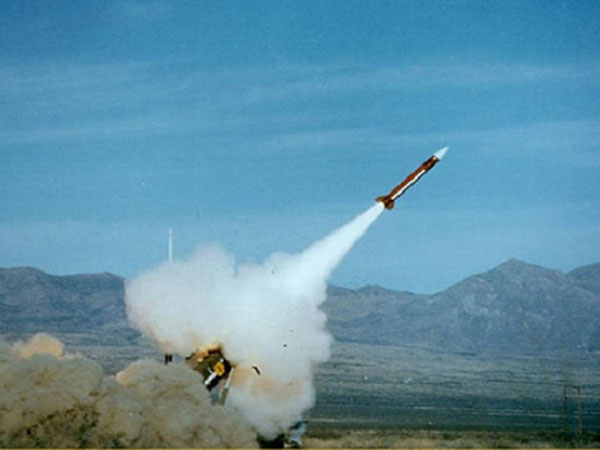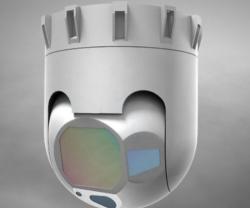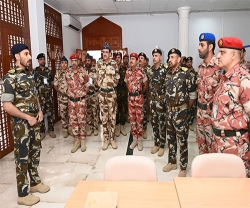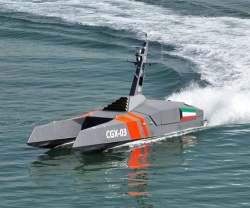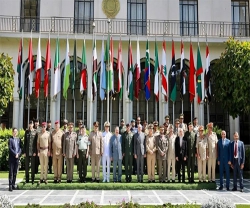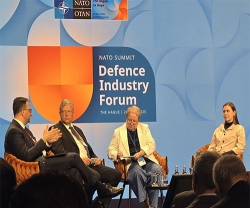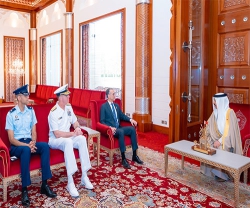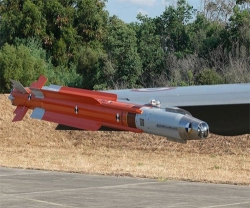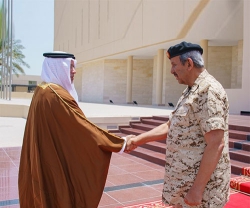"Today's Patriot is an evolving, cutting edge system that was built on a foundation of more than 2,500 ground tests, 700 flight tests, countless operational deployments, and scores of combat intercepts," said Ralph Acaba, Vice President of Integrated Air and Missile Defense at Raytheon's Integrated Defense Systems business.
"In close partnership with the US Army, our international customers, and industry partners Raytheon has introduced innovation into every aspect of Patriot: from upgrading the hardware and software to stay ahead of the threat, to sustaining the equipment, to going to the field to support the warfighter," he added.
Although the Patriots rolling out the door of Raytheon's Andover, Mass. production facility have the same name and look as earlier variants, the resemblance is only skin-deep. Cold-war era vacuum tubes and monochrome screens have long since disappeared, replaced by state of the art technology: microchips smaller than a grain of salt and hi-res touch-screen monitors that would be the envy of any video-gaming enthusiast. Today's Patriot now uses three new missiles – the GEM-T, PAC-3 and PAC-3 MSE – to engage drones, aircraft, cruise missiles and tactical ballistic missiles.
Even the design and manufacturing of Patriot has changed. "Engineers now work in a 3-D virtual reality environment that allows them to test a design approach prior to sending it to production in Raytheon's largely automated factory," Acaba said.
“The U.S. Army has committed to keeping Patriot in its inventory until 2048, so the U.S. and the 12 Patriot partner nations continue to make significant investments in the system to ensure it remains ahead of the threat. Global Patriot partner nations reap outsize benefits from these investments because the improvements, enhancements and user experiences are shared across the 13-nation Patriot partnership,” said Tim Glaeser, Vice President of Integrated Air and Missile Defense Business Development at Raytheon's Integrated Defense Systems.
The 13-nation partnership will soon grow to 14, as Poland recently selected Patriot for its air and missile defense needs.
In addition to supporting the technology roadmap developed by U.S. Army and the Patriot partnership, Raytheon is also investing its own resources in the system. Case in point is Gallium Nitride, or GaN, a technology that enhances system performance while reducing production and operation cost.
The U.S. government recently cleared the Patriot GaN-based AESA radar for export, and Raytheon has demonstrated the pilot array to a number of countries, including the U.S. and Poland. In addition to using GaN-based AESA, the main array also features other cutting edge technology, such as a new, Polish-made Identification Friend or Foe antenna that helps air defenders differentiate between enemy and friendly aircraft.
Raytheon's Global Patriot Solutions is the most advanced portfolio of air and missile defense technologies in the world, providing comprehensive protection against a full range of advanced threats including aircraft, tactical ballistic missiles, cruise missiles and unmanned aerial vehicles. Continually upgraded and enhanced to leverage the latest technology, thirteen nations depend on Patriot as the foundation for their defense.
Raytheon has been leading the innovation and development of GaN for 15 years and has invested more than $150 million to get this latest technology in the hands of the warfighter faster and at lower cost and risk. Raytheon has demonstrated the maturity of the technology in a number of ways, including exceeding the reliability requirement for insertion into the production of military systems.

